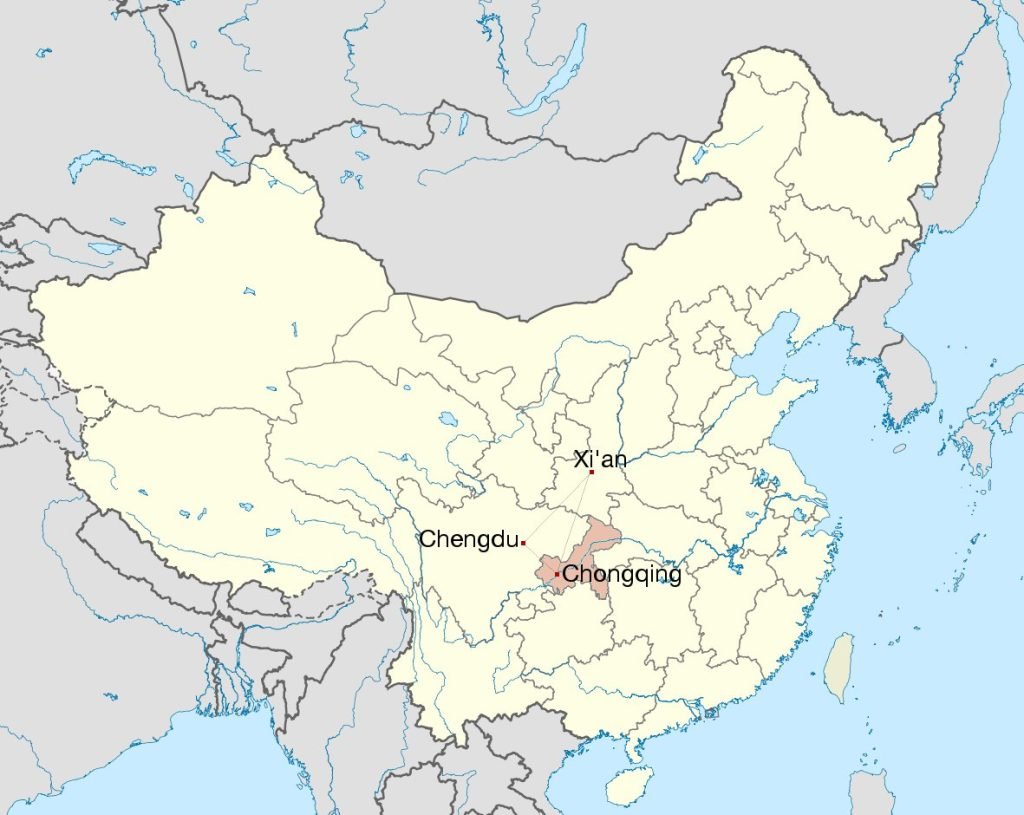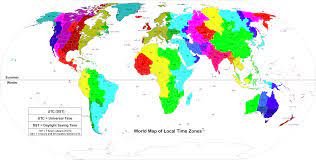Last Updated on July 16, 2024 by Nasir Hanif
Table of Contents
Introduction to the time difference
China and New York are two prominent locations with a significant time difference. China is in the UTC+8 time zone, while New York is in the UTC-5 time zone. This time difference between China and New York is approximately 13 hours, making it one of the most significant time differences between two major cities worldwide. The time difference between China and New York affects communication and scheduling. For instance, if a business in New York wants to arrange a meeting with a client in China, it must consider the time difference when scheduling the appointment. Failure to do so could lead to a missed opportunity or a significant delay in communication.
Moreover, the time difference between China and New York also affects personal relationships. Suppose someone living in New York wants to have a video call with their friend or family member in China. In that case, they need to be aware of the time difference to ensure they are not disturbing them in the middle of the night.

Importance of understanding time difference
The time difference between China and New York can be confusing, especially for those unfamiliar with time zones. However, understanding time zones are relatively simple. A time zone is a region of the Earth where all the clocks are set simultaneously. The longitudinal position of a location determines time zones, and there are 24 time zones in total.
The time difference between China and New York can be significant due to the distance between the two locations. The international date line also plays a role in the time difference, an imaginary line that runs through the Pacific Ocean, roughly following the 180° line of longitude. When you cross the international date line from east to west, you subtract a day; when you travel from west to east, you add a day.
Comparison Table
The following table describes the time difference between China and New York;
| Timezone | China Time | New York Time |
| Eastern Time | 12:00 AM | 11:00 AM |
| Central Time | 11:00 PM | 10:00 AM |
Understanding Time Zones
Time zones are crucial to modern-day communication and scheduling, allowing people to coordinate across different regions and time zones. A time zone is a region of the Earth where all clocks are set to the same time, with each time zone being offset from Coordinated Universal Time (UTC) by a specific number of hours.
How are time zones determined?
Time zones are determined based on the longitudinal position of a location. Earth is divided into 24 longitudinal segments, each 15 degrees wide, and the time zone boundaries are aligned with these longitudinal segments. Countries or regions may adopt a particular time zone based on location or political decisions. The concept of time zones was first proposed in 1879 by a Canadian railway planner named Sir Sandford Fleming. He proposed dividing the world into 24 time zones, each separated by one hour from the next, to improve global communication and transportation systems.
The first country to adopt a time zone system was Great Britain in 1847 when it introduced Greenwich Mean Time (GMT), also known as UTC+0. Other countries followed suit, and the concept of time zones became widely adopted by the 20th century.
A brief history of time zones
Today, there are 24 primary time zones globally, with each time zone being offset by an hour from the previous one. The first time zone is UTC-12, and the last time zone is UTC+14. The most common time zones include UTC-8 (Pacific Time), UTC-7 (Mountain Time), UTC-6 (Central Time), and UTC-5 (Eastern Time), which are used in the United States and Canada.
Different countries may also adopt their unique time zones based on geographical location. For instance, China follows a particular time zone eight hours ahead of UTC (UTC+8). This time zone is used throughout China, even though the country spans five geographical time zones.
Daylight saving time is another aspect of time zones that affects some countries. Daylight saving time (DST) is setting the clock ahead by one hour during the summer months to make better use of daylight. Germany first adopted this practice in 1916 during World War I, which is now used in many countries worldwide.
Time Difference Between China and New York
China and New York are two major economic hubs on opposite sides of the globe, separated by a significant time difference. The time difference between China and New York is 12 hours, with China being ahead of New York.
How the time difference affects communication and scheduling?
The time difference can significantly impact communication and scheduling between these two regions. For instance, if it is 9:00 AM in New York, it will be 9:00 PM in China. It means that if someone in New York wants to schedule a meeting with a business partner in China, they may need to prepare it for a time that is either very early or very late in their day. The time difference can also affect personal communication, such as phone calls or video chats. For example, if someone in New York wants to call their family member in China, they may need to do so when their family member is awake and available.
Factors Affecting Time Difference
The time difference between the two locations is influenced by several factors, including daylight saving time, the International Date Line, and other geographical and political factors.
Daylight saving time
During summer months, some countries observe daylight saving time to maximize daylight. During the spring and fall, the clock is set forward by one hour. However, daylight savings time is not observed in all countries, and those that do may observe it differently. This can change the time difference between two locations at other times of the year.
International date line
An imaginary line that runs roughly along the 180-degree longitude line in the Pacific Ocean, the International Date Line runs from the North Pole to the South Pole. A change in day occurs when one crosses the International Date Line, depending on the direction—for example, traveling from east to west results in gaining one day, while crossing from west to east results in losing one day. This can confuse scheduling events or communicating with people in different time zones.
Other geographical and political factors can also affect the time difference between the two locations. Countries may adopt different time zones based on location or political decisions, resulting in different time differences between neighboring countries. Additionally, governments may have different standards for observing daylight saving time, resulting in varying time differences at other times of the year.
Tips for Managing Time Difference
Managing time differences can be a significant challenge when communicating and scheduling with individuals or teams in different regions. However, several tips and strategies can help manage time differences effectively.
Times to schedule meetings
One essential tip is to identify the best times to schedule meetings. This requires considering all parties’ time zones and finding a convenient time for everyone. For example, when scheduling a meeting between China and New York, it is essential to consider the 12-hour time difference and choose a time that works for both parties. It may mean scheduling the meeting during regular business hours in one location and outside of business hours in the other.
Tools and resources for managing time difference
Another helpful tip for managing time difference is to use tools and resources designed for this purpose. Several online tools, such as time zone converters and meeting scheduling software, can help calculate the time difference and identify the best times to schedule meetings. Many calendar apps also allow for planning meetings across different time zones, making coordinating with individuals or teams in other parts of the world more accessible.
Strategies for staying productive despite time difference challenges
Staying productive despite time difference challenges is also essential.
- One strategy is planning and adjusting your work schedule to accommodate the time difference. For example, if you are located in New York and must communicate with colleagues in China, you may need to shift your work schedule to accommodate early or late-night meetings. This may mean starting work earlier or working later than usual.
- Another strategy for staying productive is to leverage technology to facilitate communication and collaboration. It includes using video conferencing software, instant messaging apps, and project management tools allowing real-time collaboration and communication across different time zones. This helps to ensure that everyone is on the same page and that communication is seamless despite the time difference.
- Finally, it is essential to communicate effectively with colleagues or team members in different time zones. This includes being clear about meeting times, deadlines, and expectations. It is also essential to be flexible and accommodating when necessary, recognizing that time differences can be challenging for everyone involved.
Cultural Differences and Time
Cultural differences can significantly impact how individuals perceive and manage time. It is particularly true in Chinese and American cultures, with significant differences in attitudes toward time.
Differences in perceptions of time in Chinese and American cultures
In Chinese culture, time is often viewed as cyclical and fluid rather than linear and finite. It means there is a greater emphasis on long-term planning and relationships than short-term goals and deadlines. In contrast, American culture tends to place a higher value on punctuality, efficiency, and productivity. These cultural differences can affect scheduling and communication in significant ways. For example, a Chinese business partner may focus more on building long-term relationships and less on meeting short-term deadlines. It can create challenges for American counterparts more focused on meeting immediate goals and deadlines.
Similarly, cultural differences in communication styles can affect how individuals manage time. In Chinese culture, there is often a greater emphasis on indirect communication, where individuals may be less direct in expressing their opinions or feelings. In contrast, American culture tends to place a higher value on direct communication, where individuals expect to communicate clearly and concisely.
How can cultural differences affect scheduling and communication?
These cultural differences can create challenges when scheduling meetings or communicating across cultures. For example, a Chinese business partner may be less likely to provide direct feedback on a proposal or project, making it challenging for American counterparts to gauge the success of their efforts.
- One strategy for managing cultural differences in time management is recognizing and respecting different cultural norms and expectations. It means taking the time to understand business partners’ or colleagues’ cultural values and attitudes and adapting communication and scheduling strategies accordingly.
- Another strategy is to be flexible and adaptable in how you manage time. This means being open to different approaches to scheduling and communication and being willing to adjust your practice as needed to accommodate different cultural norms and expectations.
Conclusion
In conclusion, understanding time differences are crucial for effective communication, scheduling, and productivity, especially in the globalized world we live in today. Recognizing that time zones determine geographical and political factors. Factors such as daylight saving time and the international date line can also impact time differences. When exploring the time difference between China and New York, it is essential to consider cultural differences in perceptions of time and how they affect scheduling and communication. Awareness of these differences and adapting communication and scheduling strategies can help mitigate any challenges.
Managing time differences requires effective communication, flexibility, and using tools and resources designed to help manage scheduling across different time zones. Some of these tools include time zone converters, calendar apps, and communication platforms that facilitate remote collaboration and communication.
Apart from that, if you want to know about How to develop travel or lifestyle habit, then please visit our Travel category.
FAQs
The time difference between China and New York is 12 hours.
It can make scheduling calls or meetings difficult due to the significant time difference.
The best time to communicate with someone in New York if you are in China is during the evening or early morning.
Businesses may need to adjust their work schedules and hours to accommodate the time difference.
The time difference can benefit businesses by allowing for around-the-clock operations and increased productivity.
The impact of daylight saving time on the time difference between China and New York varies depending on the time of year, as both regions do not necessarily observe daylight saving time simultaneously.
Travelers can try to adjust their sleep schedule before traveling to minimize the effects of jet lag caused by the time difference.



























